
Davao del Sur, officially the Province of Davao del Sur, is a province in the Philippines located in the Davao Region in Mindanao. Its capital is Digos. Davao City is the largest city in terms of area and population within the province's jurisdiction, yet it is administratively independent from the province; as such, Davao City is only grouped for geographical and statistical purposes.

Digos, officially the City of Digos, is a 2nd class component city and capital of the province of Davao del Sur, Philippines. According to the 2020 census, it has a population of 188,376 people.

San Isidro, officially the Municipality of San Isidro, is a 3rd class municipality in the province of Davao Oriental, Philippines. According to the 2020 census, it has a population of 33,664 people.

Malungon, officially the Municipality of Malungon, is a 1st class municipality in the province of Sarangani, Philippines. According to the 2020 census, it has a population of 105,465 people.

Asuncion, officially the Municipality of Asuncion, is a 1st class municipality in the province of Davao del Norte, Philippines. According to the 2020 census, it has a population of 61,893 people.

Carmen, officially the Municipality of Carmen, is a 1st class municipality in the province of Davao del Norte, Philippines. According to the 2020 census, it has a population of 82,018 people.

Kapalong, officially the Municipality of Kapalong, is a 1st class municipality in the province of Davao del Norte, Philippines. According to the 2020 census, it has a population of 81,068 people.
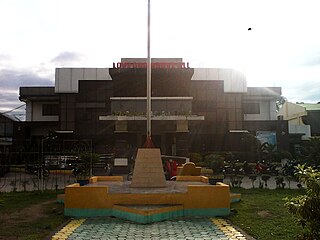
Santo Tomas, officially the Municipality of Santo Tomas, is a 1st class municipality in the province of Davao del Norte, Philippines. According to the 2020 census, it has a population of 128,667 people.

New Corella, officially the Municipality of New Corella, is a 2nd class municipality in the province of Davao del Norte, Philippines. According to the 2020 census, it has a population of 57,913 people.

Compostela, officially the Municipality of Compostela, is a 1st class municipality in the province of Davao de Oro, Philippines. According to the 2020 census, it has a population of 89,884 people.

Laak, officially the Municipality of Laak, is a 1st class municipality in the province of Davao de Oro, Philippines. According to the 2020 census, it has a population of 79,744 people.
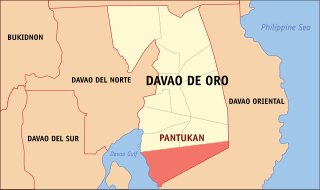
Pantukan, officially the Municipality of Pantukan, is a 1st class municipality in the province of Davao de Oro, Philippines. According to the 2020 census, it has a population of 90,786 people.
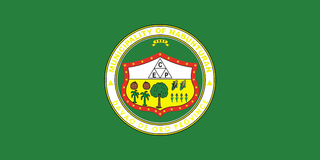
Nabunturan, officially the Municipality of Nabunturan, is a 1st class municipality and capital of the province of Davao de Oro, Philippines. According to the 2020 census, it has a population of 84,340 people.

Don Marcelino, officially the Municipality of Don Marcelino, is a 3rd class municipality in the province of Davao Occidental, Philippines. According to the 2020 census, it has a population of 45,540 people.

Kiblawan, officially the Municipality of Kiblawan, is a 2nd class municipality in the province of Davao del Sur, Philippines. According to the 2020 census, it has a population of 49,381 people.

Malita, officially the Municipality of Malita, is a 1st class municipality and capital of the province of Davao Occidental, Philippines. According to the 2020 census, it has a population of 118,197 people.

Santa Maria, officially the Municipality of Santa Maria, is a 2nd class municipality in the province of Davao Occidental, Philippines. According to the 2020 census, it has a population of 57,526 people. Postal code 8011.
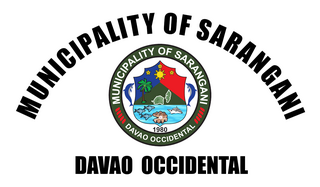
Sarangani, officially the Municipality of Sarangani, is a 4th class municipality in the province of Davao Occidental, Philippines. According to the 2020 census, it has a population of 22,515 people.

Boston, officially the Municipality of Boston, is a 3rd class municipality in the province of Davao Oriental, Philippines. According to the 2020 census, it has a population of 14,618 people.
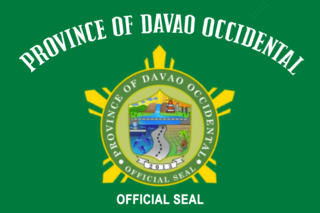
Davao Occidental, officially the Province of Davao Occidental, is a province in the Philippines located in the Davao Region in Mindanao. Its capital is the municipality of Malita. To the east lies Davao Gulf. It also shares a maritime border with the Indonesian province of North Sulawesi to the south.
























